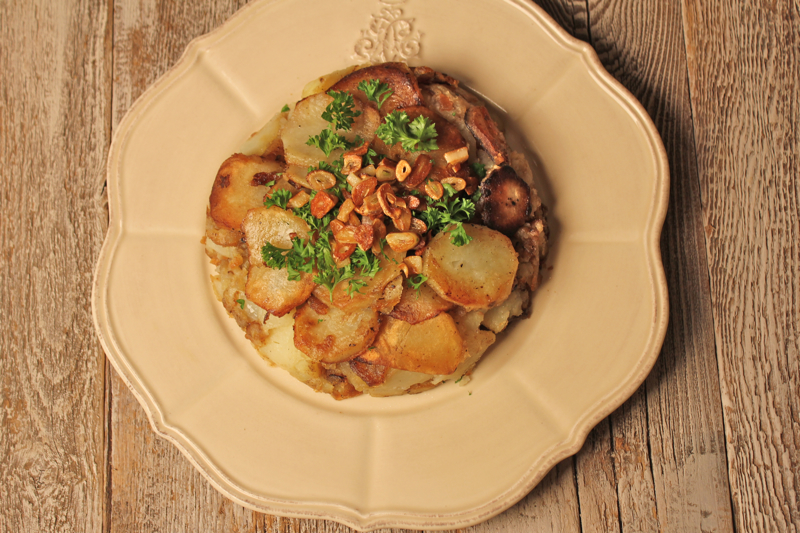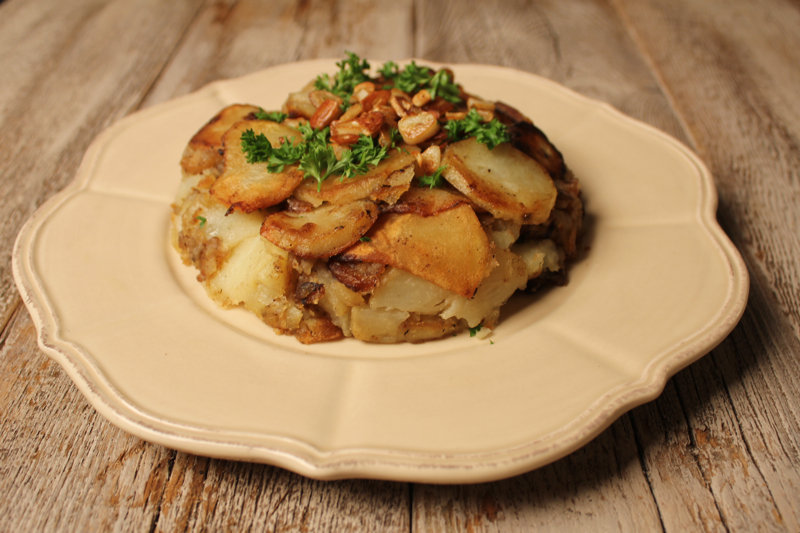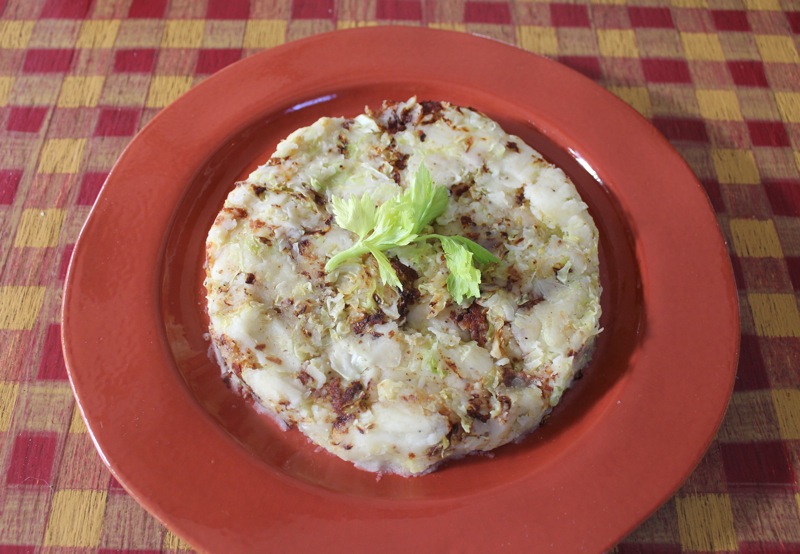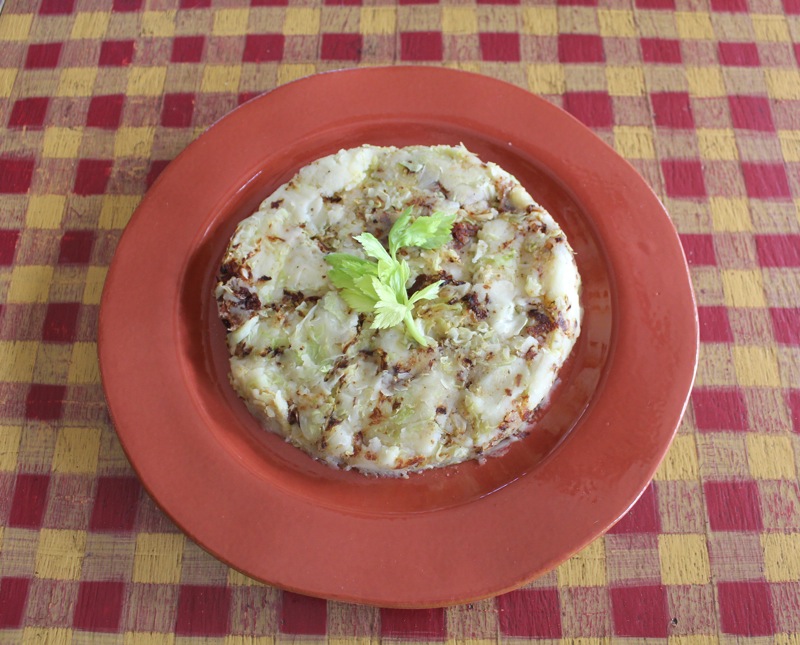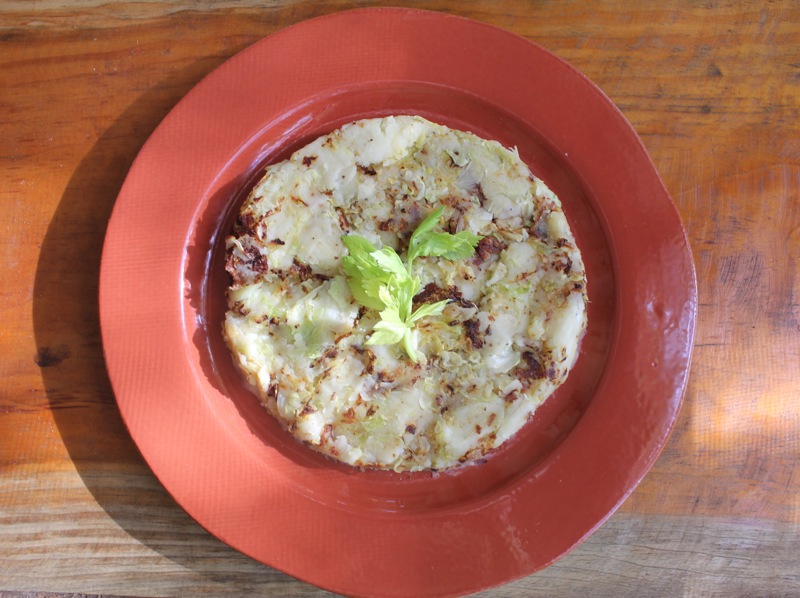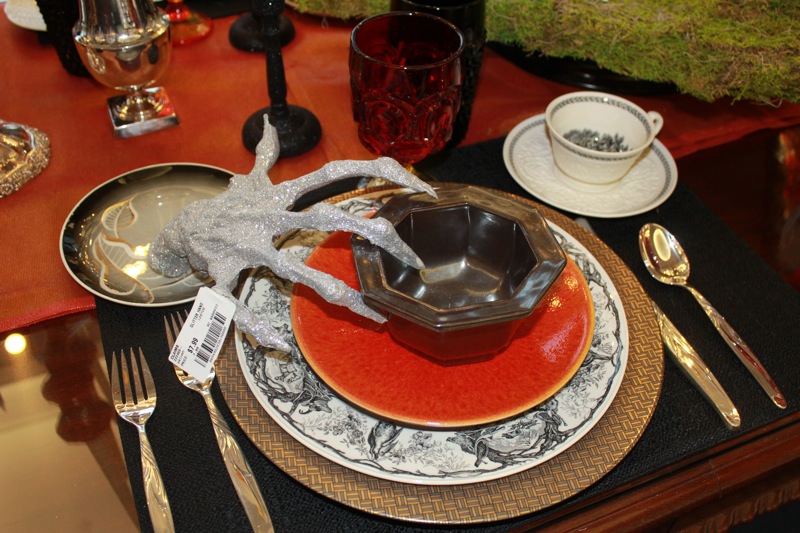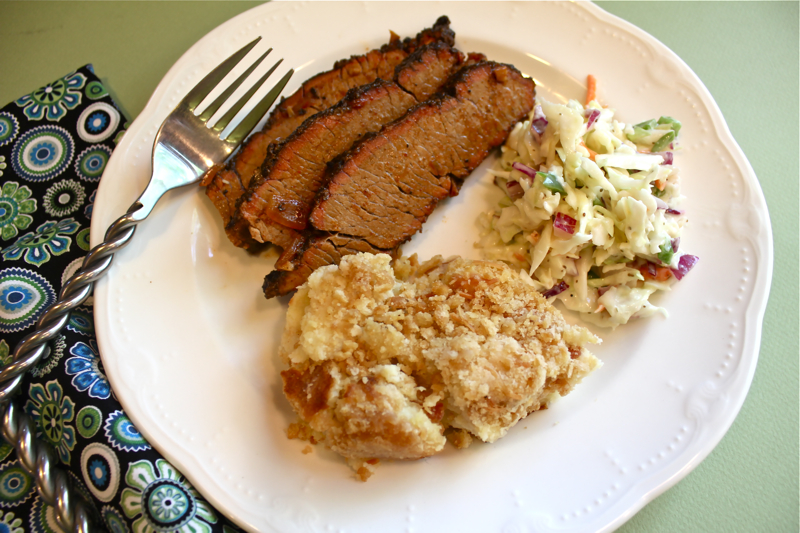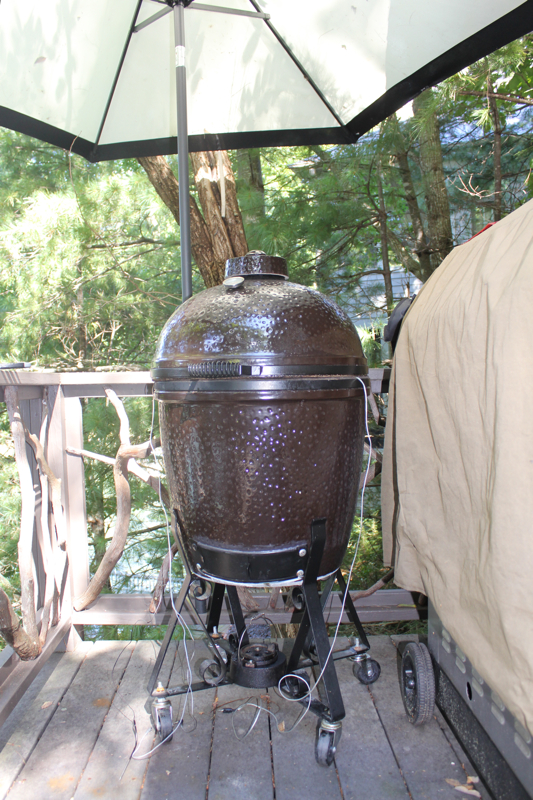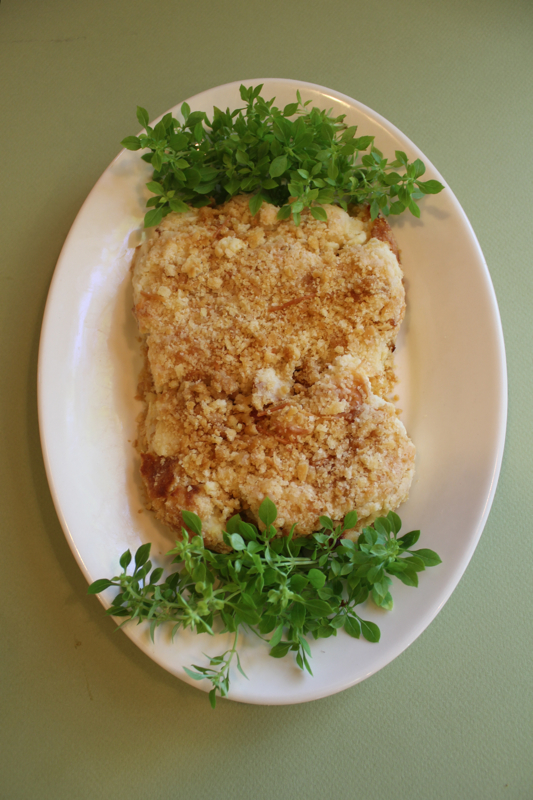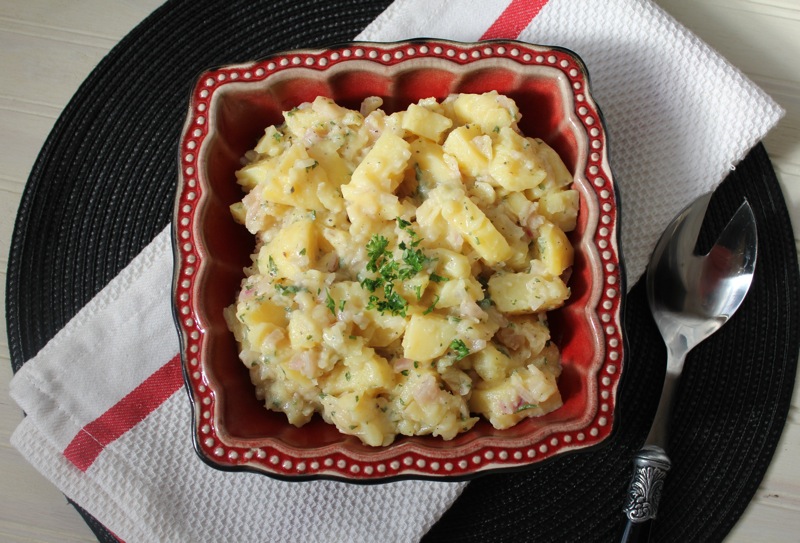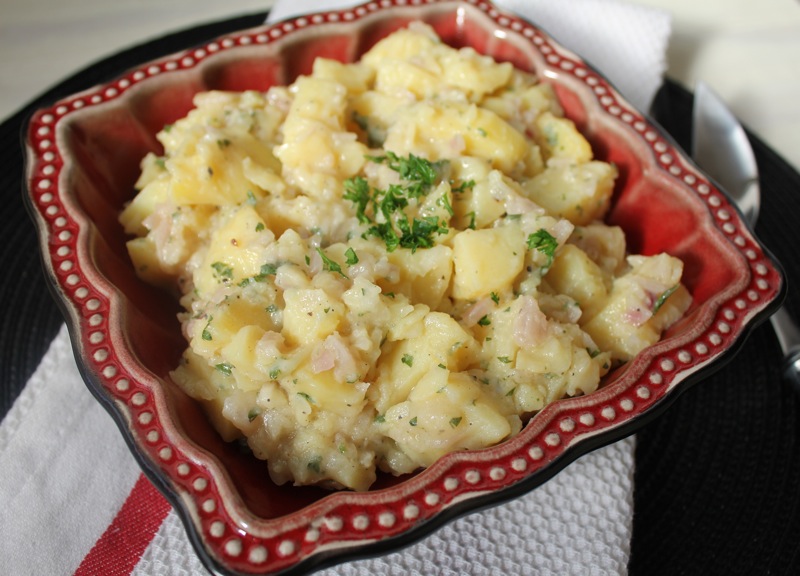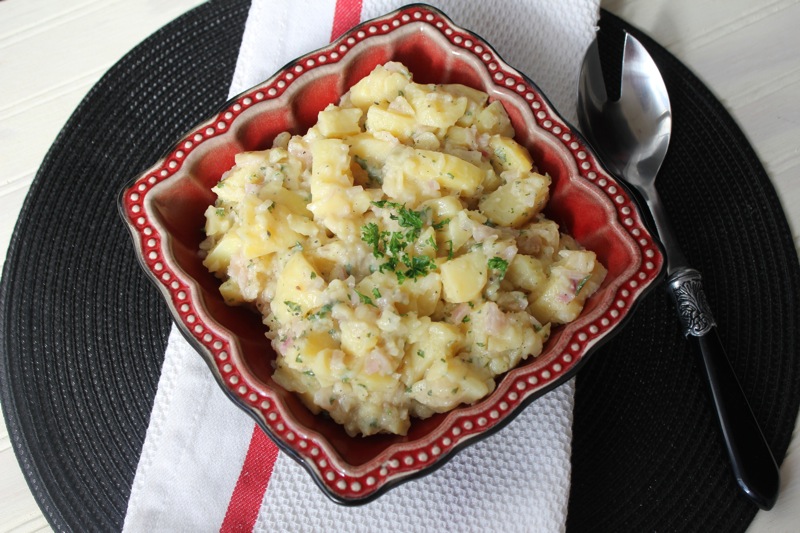This is actually part 2 of my previous post. On the same evening that I made the Pork Tenderloin with Grapes, I made this Potato Cake with Garlic and Parsley. They are both recipes from Mimi Thorisson on her blog Manger. If I had been in my Lake Lure Kitchen this potato cake would have looked better. It is because I have the perfect mold for it there. View the following video to watch Mimi’s husband Oddur making this dish along with a steak and you will see what I mean. Here is the link. What I really needed to mold the potato cake was my Charlotte Mold. I have had my tin-lined charlotte mold for many years and it comes in handy for many purposes. Here is a link to one of my favorite desserts using it.
But if you don’t have a charlotte mold, you can do as I did here in Florida and use a 2 quart round oven proof casserole. I sprayed mine with olive oil spray.
This potato cake was excellent. I used the duck fat that I bought in France last year in which to fry it. The duck fat has been in my freezer just waiting for the right application. There is nothing better than potatoes cooked in duck fat. Here is a source if you would like to order it. But you could also cook the potatoes in a mixture of butter and olive oil. It was an added bonus to be able to saute the potatoes ahead of time and put them into the mold to be finished in the oven at our convenience. The potato cake is just right for 4 people. Just cut into pie shaped wedges and serve. The cooked garlic and parsley on top are the finishing touch and make for a beautiful presentation. Your friends will love you. And for all of you guys out there, Oddur Thorisson’s video on a perfect date night dinner would be a perfect recipe for a Valentine’s day dinner.
POTATO CAKE WITH GARLIC AND PARSLEY
5 large potatoes
6 garlic cloves (sliced fine)
2 handfuls of chopped parsley
1 tbsp butter
8-10 tbsp duck fat
Salt & Pepper
Pre-heat the oven to 350 degrees F.
Start frying on a medium heat the sliced potatoes with one tbsp butter for 8 minutes. Pour 8 tbps (or more if you wish and according to your taste) of the duck fat onto the potatoes and continue frying till cooked and golden. You’d be surprised at how fast it cooks with duck fat. Flip potatoes constantly. Add salt. By 20-25 minutes they should be cooked. Put potatoes in a small cake mold and press gently with a potato masher or a large spoon so the potatoes take a good shape. You don’t want to mash the potatoes, just press them. Place in the oven for 5-8 minutes. While in the oven, fry the garlic in the potato pan until it is just browned.
Take the potato cake out of the oven, remove from mold and place on a serving plate. Put the chopped parsley and fried garlic on top. Serve immediately.
